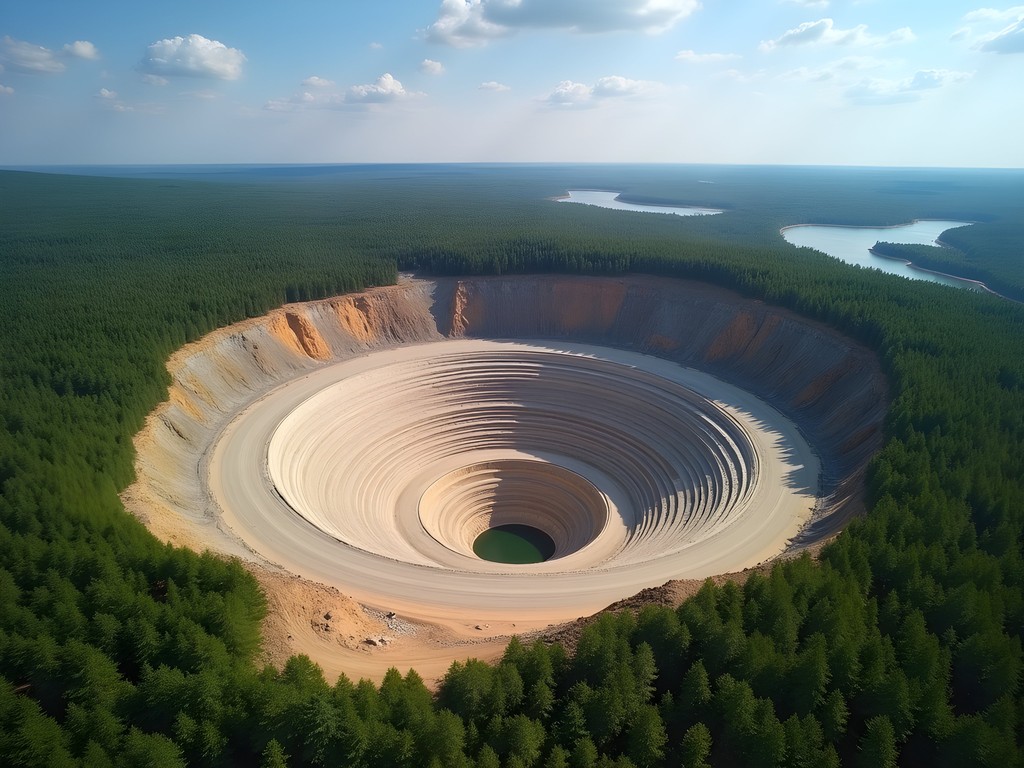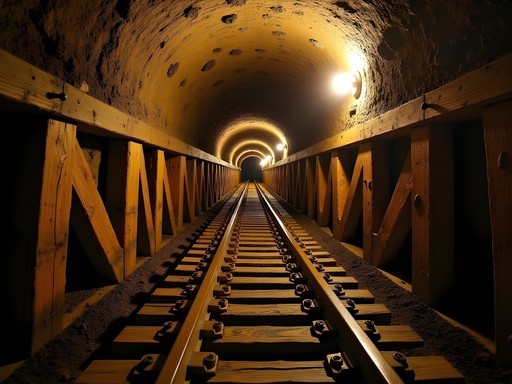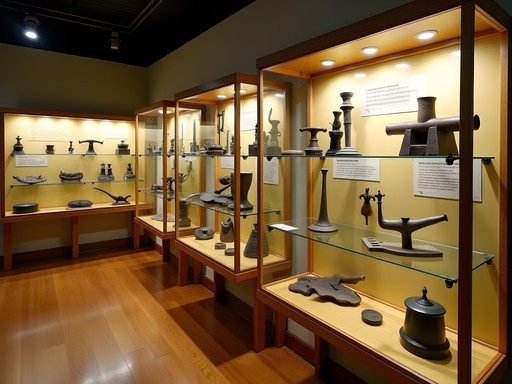Disclosure: This article contains affiliate links. We may earn a commission from purchases at no extra cost to you, which helps our travel content.
The term 'gold rush' often evokes images of California or the Klondike, yet few travelers realize that one of North America's most significant gold discoveries occurred in Northern Ontario, fundamentally altering the region's trajectory. As someone who has spent decades analyzing historical industrial structures, I found Timmins to be an engineer's playground—a living laboratory where early 20th-century mining innovation remains remarkably preserved. During my recent summer exploration of this rugged frontier town, I discovered that Timmins offers far more than mere historical curiosity; it presents a compelling case study in how extractive industry shapes community identity across generations. The technical achievements visible throughout the region's mining operations—from early timbered shafts to modern ventilation systems—tell a story of human ingenuity that deserves greater recognition in our collective understanding of North American industrial heritage.
The Engineering Marvel of Timmins Underground Gold Mines
My fascination with subterranean structures made the Timmins Underground Gold Mine Tour my first priority upon arrival. Unlike many sanitized heritage experiences, this tour takes visitors 600 feet below the surface into a genuine working environment where you can physically grasp the scale of early 20th-century mining operations.
The structural engineering principles employed in these early mines remain impressive by contemporary standards. The timber-framing techniques used to prevent collapse demonstrate a sophisticated understanding of load distribution that predates modern computational modeling. Tour guides—many former miners themselves—explain how each shaft was hand-drilled using techniques developed through painful trial and error. The precision of these early excavations, accomplished without modern surveying equipment, speaks to the remarkable spatial reasoning abilities of these pioneering engineers.
What particularly captured my attention was the ventilation system. Long before HVAC became standardized, these mines implemented ingenious airflow management solutions using basic thermodynamic principles. The contrast between the primitive tools and the sophisticated understanding of air circulation patterns reveals much about the pragmatic innovation that characterized frontier industrial development.
I'd strongly recommend bringing a proper headlamp rather than relying solely on the provided equipment. The ability to direct your own illumination dramatically enhances the experience, allowing you to examine structural details often missed by those dependent on the guide's flashlight.

💡 Pro Tips
- Book the comprehensive tour package that includes both surface and underground components for a complete understanding of the operation
- Wear closed-toe shoes with good traction; the mine floor remains wet in sections
- Bring a lightweight jacket regardless of outside temperature; the underground environment maintains a constant 10-12°C (50-54°F)
The Timmins Museum: Northern Stories in Technical Context
While underground tours provide visceral understanding, the Timmins Museum: National Exhibition Center contextualizes the region's development through meticulously documented exhibits. As an engineering educator, I was particularly impressed by their technical accuracy—a refreshing departure from the oversimplification often found in mining heritage displays.
The museum's collection of original mining equipment includes drill bits, ventilation components, and ore processing machinery that illustrate the evolution of extraction technology. What makes this collection exceptional is the accompanying documentation of modifications made specifically for the Northern Ontario context. These adaptations—often developed by local engineers responding to unique geological conditions—demonstrate the practical innovation that characterized frontier industrial communities.
The archival photographs depicting early survey teams are particularly valuable for understanding how geological knowledge developed incrementally through observation and documentation rather than through the data-rich modeling techniques we employ today. For those interested in the social dimensions of mining communities, the exhibits detailing living conditions and labor relations provide crucial context for understanding how technical and social systems evolved in tandem.
I spent nearly four hours examining the collections, taking detailed notes with my digital notebook, which allowed me to capture important technical details without the distraction of a laptop or the limitations of paper. For fellow engineers or history enthusiasts planning a visit, I recommend allocating at least half a day to properly absorb the wealth of information presented.

💡 Pro Tips
- Visit on weekday mornings when the museum is least crowded, allowing better access to the detailed exhibit descriptions
- Request access to the archival collection if you have specific research interests; staff can accommodate scholarly inquiries with advance notice
- Download the museum's companion app before visiting for additional technical specifications not included in the physical displays
Aerial Perspectives: Skydiving Over Hollinger Open Pit
Combining my professional interest in historical structures with my personal passion for skydiving presented a unique opportunity in Timmins. While commercial skydiving operations aren't permanent fixtures in the area, I arranged a tandem jump through a visiting operation that occasionally services the region during summer months.
The aerial perspective of the Hollinger Open Pit Mine was nothing short of revelatory. From 12,000 feet, the massive excavation reveals patterns of extraction that tell the story of how geological understanding evolved over decades. The concentric rings visible from above demonstrate how mining engineers progressively refined their understanding of the ore body's geometry, adapting their approach as they gathered more data.
Particularly striking was the visible contrast between the reclaimed sections and active areas, offering a literal bird's-eye view of environmental remediation efforts. The carefully engineered drainage systems, invisible from ground level, become clearly apparent from above, showcasing the sophisticated water management strategies essential for both operational efficiency and environmental compliance.
For those unable to arrange a skydiving experience, I recommend exploring drone photography options (with proper permits) or, at minimum, seeking out the excellent topographical models at the Timmins Museum that illustrate the three-dimensional reality of these massive excavations. Understanding the vertical dimension of these sites is crucial for appreciating their engineering complexity.
I captured the entire experience using my action camera, which performed admirably despite the extreme conditions. The stabilization features proved essential for maintaining image clarity during the high-speed descent.

💡 Pro Tips
- Contact local skydiving operations months in advance to coincide with their Northern Ontario tour schedule
- Request permission for aerial photography when booking; some restrictions apply near active mining operations
- Consider joining one of the scheduled helicopter tours if skydiving isn't an option; they provide excellent aerial views of the mining district
Cultural Preservation at the Timmins Multicultural Centre
The technical aspects of mining operations represent only one dimension of Timmins' heritage. Equally fascinating is the multicultural community that developed around these industrial operations. The Timmins Multicultural Centre offers a nuanced exploration of how diverse immigrant communities—primarily Finnish, Ukrainian, Italian, and Polish—adapted their cultural practices to the harsh realities of Northern Ontario.
As an engineer with a longstanding interest in knowledge transfer across generations, I was particularly drawn to the center's documentation of traditional construction techniques transplanted from Eastern Europe and adapted to local conditions. The Finnish community's adaptation of traditional log construction methods to utilize local timber species demonstrates a sophisticated understanding of material properties that modern engineering education would do well to incorporate.
The center's oral history collection includes interviews with first-generation miners describing how they modified traditional European mining techniques to address the specific geological challenges of the Canadian Shield. These narratives reveal that formal engineering knowledge often lagged behind practical innovations developed through experiential learning.
The preservation of fermentation traditions particularly resonated with my personal interest in the subject. The center maintains a small but impressive collection of traditional fermentation vessels used by Eastern European communities to preserve food through the harsh northern winters. The technical precision of these methods—controlling temperature, managing microbial environments, and ensuring proper acidification—represents an important body of pre-industrial knowledge that deserves wider recognition.
The center's collection of multilingual mining manuals, safety instructions, and technical documents provides invaluable insight into how specialized knowledge was communicated across language barriers in early industrial settings—a challenge that remains relevant in today's globalized engineering environment.

💡 Pro Tips
- Visit during one of the scheduled cultural demonstration days when traditional techniques are actively demonstrated
- Request access to the oral history archives if you have specific research interests; appointments must be made in advance
- Consider participating in one of the center's workshops on traditional crafts or food preservation techniques for hands-on understanding
Cedar Meadows Resort: Engineering Relaxation in the Northern Wilderness
After days of intensive exploration, Cedar Meadows Resort provided a thoughtfully engineered respite that balanced comfort with contextual authenticity. Located on 175 acres of northern wilderness, the resort demonstrates how careful site planning can preserve natural features while providing modern amenities.
From an engineering perspective, the resort's Nordic Baths present a particularly interesting case study in thermodynamic design. The system maintains precise water temperatures across hot, warm, and cold pools using a combination of geothermal principles and modern control systems—an elegant solution that minimizes energy consumption while maximizing user comfort.
My accommodation in one of the resort's timber-framed chalets provided an opportunity to examine contemporary adaptations of traditional building techniques. The structural system employs modern fastening methods while maintaining the thermal mass benefits of traditional heavy timber construction—a pragmatic hybrid approach that honors historical methods while incorporating contemporary performance standards.
The property includes a wildlife conservation area accessible via guided tours. While primarily focused on ecological preservation, I was struck by the sophisticated water management systems implemented to maintain appropriate habitat conditions—another example of applied engineering supporting conservation objectives.
For evening meals, I recommend the on-site restaurant's locally sourced menu, which incorporates traditional preservation techniques like smoking and fermentation—cultural practices that originally developed as practical solutions to food storage challenges in northern communities. I found their house-fermented vegetables particularly impressive, demonstrating proper acidification technique while maintaining textural integrity.
I spent several evenings on my private deck documenting the day's observations in my travel journal, which I've found ideal for field notes due to its durable binding and paper quality that handles technical sketches well.

💡 Pro Tips
- Request a chalet on the northern edge of the property for the best balance of privacy and wilderness views
- Schedule your Nordic Baths experience for early morning (before 9 AM) to enjoy the facilities without crowds
- Book the wildlife tour at least one day in advance; the guides can customize the experience based on specific interests
Final Thoughts
Timmins represents far more than a footnote in mining history—it offers a comprehensive case study in how technical innovation, cultural adaptation, and environmental management intersect in resource-dependent communities. For couples seeking both intellectual engagement and natural beauty, this Northern Ontario destination provides a refreshingly substantive alternative to more conventional heritage tourism. The engineering achievements visible throughout the region deserve wider recognition, particularly as we collectively grapple with the complex legacy of extractive industries. I encourage fellow travelers—especially those with technical backgrounds—to approach Timmins with both analytical curiosity and cultural sensitivity. The knowledge preserved here, from traditional building techniques to innovative mining solutions, offers valuable lessons for contemporary challenges in sustainable development and cultural preservation.
✨ Key Takeaways
- Timmins' underground mine tours provide unparalleled access to early 20th-century industrial engineering techniques
- The multicultural heritage of the region demonstrates how diverse knowledge systems adapted to northern conditions
- Aerial perspectives reveal crucial dimensions of mining operations invisible from ground level
- The region offers sophisticated accommodation options that integrate thoughtfully with the natural environment
📋 Practical Information
Best Time to Visit
June through August
Budget Estimate
$1,500-2,000 per couple for one week
Recommended Duration
5-7 days
Difficulty Level
Beginner
















Comments
Megan Martin
I visited Timmins last month while researching for a business conference on sustainable mining practices. What struck me was how the community has balanced preserving their mining heritage while developing new economic opportunities. The Timmins Museum's technical exhibits are surprisingly comprehensive - they have actual drilling equipment and safety gear from different eras. For anyone interested in the engineering aspects, I'd recommend taking this field guide which has detailed maps of the different mine systems. The local tourism office also offers a specialized tour focusing on environmental reclamation projects around former mining sites. Astrid, your point about cultural adaptation is spot-on - the diversity of food and languages in such a remote location really shows how global the gold rush phenomenon was.
blueninja
Thanks for the recommendation! Did you stay downtown or closer to the mining sites?
Megan Martin
I stayed downtown at the Cedar Meadows Resort - convenient location and they have this great wilderness tour on their property where you can see moose and elk!
exploreguy
My grandfather actually worked in the Hollinger mine back in the 60s, so this article really hit home for me! I visited Timmins last fall to trace some family history and was blown away by how well they've preserved everything. The Timmins Museum has this amazing digital archive where I found photos of my grandpa's mining crew! If anyone's going, don't miss the evening light show they project onto the old mining equipment outside the museum - it tells the story of the gold rush through animation and it's absolutely stunning. The multicultural center also has this incredible collection of workers' personal items and letters that really shows what daily life was like. Astrid - your section on the engineering marvels really captured what makes these sites special!
summertime
That's such a cool personal connection! Did your grandfather tell you stories about working there?
exploreguy
He passed before I was born, but my dad shared some of his stories. Apparently the miners had their own slang language that mixed English, French, Finnish and Ukrainian terms. The museum actually has recordings of it!
globequeen
The contrast between industrial mining and the beautiful northern forest is what makes Timmins special. Great photos!
smartwalker
This looks amazing but how do you actually get to Timmins? Is it difficult to reach without a car?
exploreguy
There's actually an airport in Timmins with connections from Toronto! I flew in and then used local taxis to get around. The downtown area is pretty walkable, but you'll need transportation for the mine sites. Most hotels can arrange tours that include pickup.
smartwalker
Thanks so much! That's super helpful. Did you need to book the mine tours in advance?
exploreguy
Definitely book ahead in summer! I used my travel guide which had all the contact info. The underground tours have limited spots and fill up quick.
Frank Garcia
I actually visited Timmins last year while backpacking across Canada! The underground mine tour was genuinely one of the most fascinating technical experiences I've had while traveling. The guides were mostly retired miners who could explain every detail of the equipment and engineering challenges. What struck me was how the town has preserved this industrial heritage while acknowledging the multicultural workforce that built it. The Timmins Multicultural Centre had an exhibition showing immigration patterns tied to mining booms that gave me a much deeper understanding of Canadian history than the typical tourist spots. Astrid, your aerial perspective section makes me regret not trying the skydiving - that view of the open pit must be incredible!
summertime
Wow! Never knew Timmins had such a rich gold mining history! Those underground mine tours look incredible!
Frank Garcia
Right? I was equally surprised. Northern Ontario doesn't get enough attention from us international travelers.
summertime
So true! Definitely adding this to my bucket list for next summer!
hikingtime
Just got back from Timmins and WOW! The Multicultural Centre was amazing - caught a Finnish folk dance performance and tried some Ukrainian perogies. Such a cool mix of cultures from the mining boom days. The hiking trails around the old mining sites were fantastic too! Great post Astrid!
blueninja
How many days would you recommend staying in Timmins to see everything? Planning a trip for next summer.
rednomad
Is the Hollinger Open Pit accessible to regular visitors or do you need special permission for that skydiving experience? Looks incredible in the photos!
globequeen
There's a viewing platform that's open to the public, but for the skydiving you need to book with a local company. Did it last year - totally worth it!
Fatima Sims
I visited Timmins last summer and was blown away by the underground mine tour! The engineering is truly impressive - standing in those massive chambers 600 feet below ground gave me chills. The guides were former miners who shared incredible stories about working conditions in the early days. Make sure to bring a light jacket even in summer because it gets chilly down there. The Timmins Museum was also a highlight - they had this interactive exhibit where you could try your hand at old-school gold panning techniques. Astrid, your aerial perspective section made me regret not doing the skydiving tour!
hikingtime
Did you need to book the underground tour in advance? Thinking of going in October!
Fatima Sims
Yes! Definitely book at least a week ahead, especially in peak season. They only take small groups down for safety reasons. October should be beautiful with the fall colors!
Venture X
Premium card with 2X miles, $300 travel credit, Priority Pass